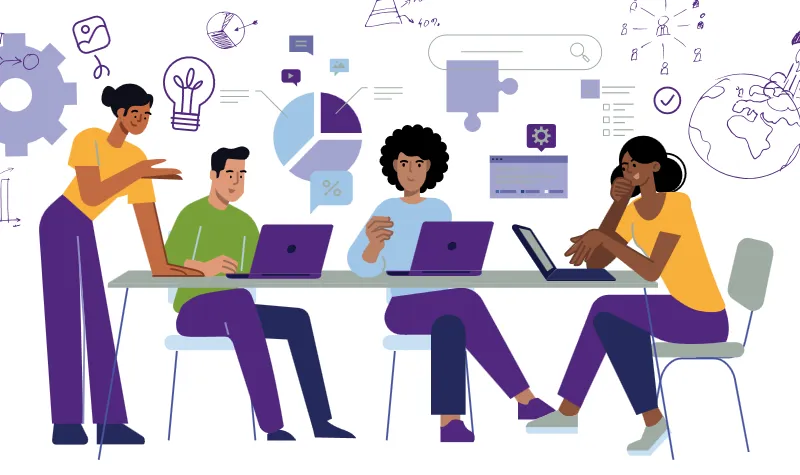In this excerpt from the HSMAI Foundation Special Report: The State of Hotel Sales, Marketing, and Revenue Optimization Talent 2023-2024, we explore the intricate dynamics of the hospitality industry, shaped by demographic trends and evolving workforce paradigms. My review illuminates the industry's current landscape, characterized by both optimism and challenges as it emerges from the post- COVID-19 era.
The U.S. Bureau of Labor Statistics anticipates a promising future for leisure and hospitality, projecting the sector to mostly recover pandemic employment losses; yet recovery is projected to extend until 2031, underscoring persistent industry challenges (TED: The Economic Daily,
U.S. Bureau of Labor Statistics, October 17, 2022). According to the same agency, as of November 2023 almost 1.1 million job vacancies existed in the Leisure and Hospitality Sector, a vacancy rate of 6.4 percent. Additionally, Bain and Company in a report entitled “Moving Beyond the Staffing Crisis” predicts a significant shift of about 150 million jobs to older workers by the decade’s end, with older workers comprising over 25 percent of the workforce. This combined with a slower pace of entry of new workers into the workforce caused by fewer people entering college and making hospitality a career choice, citing both costs of education and financial rewards, will prolong the pressure currently felt by the lack of skilled workers. (James Root, 2023).
Emily Dean’s research (Dean, 2023) highlights the significance of navigating a multigenerational workforce, with organizations now spanning four generations:
- Baby Boomers (1946-1964) account for 20-25 percent.
- Gen X (1965-1980) contributes 30- 35%.
- Millennials (born 1981-2000) constitute 35 to 40% of the workforce.
- Gen Z (2001-2020) makes up 5-10%.
While there remain challenges (Magnus- Sharpe, 2022), the acceptance of a diverse workforce and the need to accommodate the changing workplace has grown to be widely accepted in the hospitality industry and in the corporate world in general. Many HR professionals (89%) (Dean, 2023) (Clarke, 2023) view a multi-generational workforce as a positive factor when it comes to business performance. According to a recent survey conducted by Bridge Partners LLC, 88% of large employers see their DEI initiatives as necessary, and 80% view them positively. DEI initiatives are essential to fostering a positive work culture. Through exposure to diverse perspectives, companies can improve employee morale, promote business ethics, and drive creative problem-solving and innovation. Companies that prioritize DEI (diversity, equity, and inclusion) are better equipped to respond to challenges, win top talent, and meet the needs of different customer bases.
Several studies have come to the same conclusion, if companies want to promote innovative, successful, and productive workforces, there will be a need for bridging generational gaps and leveraging the unique strengths of each cohort (Dean, 2023). Organizations must also address inherent biases that hinder hiring and advancement across generations. Gen Z workers promise to be the most racially and ethnically diverse generation in U.S. history. Gen Z is projected to prioritize job flexibility and better work-life balance and resist many of the more restrictive management practices of prior generations (Gould, 2023, Rock 2023, Faraci, 2023).
The Baby Boomer generation will continue to retire, but many will choose to prolong their time in the workforce. They can be a valuable resource for corporations as many of them will value passing on their skills and knowledge to younger workers and will be more motivated by such factors as personal growth, helping others, and having a strong team spirit (Root, 2023).
We’ll now explore the impact of demographic shifts, the staffing crisis, and the evolving multigenerational workforce, with a focus on their impact on revenue management, marketing, and sales.
Throughout the report we will provide actionable strategies and recommendations for talent management, including:
- Ongoing training
- Cross-generational learning
- Flexible work arrangements
- Leadership transition planning
- Diversity initiatives
- Health and well-being programs
- Technological adaptation
- Supporting client relationship transitions
Demographic Shifts and Staffing Crisis:
The scarcity of candidates with skills in digital, analytical expertise, and evolving market dynamics poses challenges in talent acquisition across commercial disciplines. This necessitates investment in ongoing training programs to upskill existing staff and adapt to industry demands, as well as fostering cross-generational learning. Examples include establishing discipline specific digital academies, as well as intergenerational mentorship programs.
Cross-generational learning is pivotal for sales, marketing, and revenue management, as older professionals bring invaluable wisdom and strategic skills and can cater to diverse customer bases and needs. Strategies include cultivating a mentorship-driven culture, diversity and inclusion training, and offering flexible work arrangements. Intergenerational mentorship programs and keeping experienced sales leaders in part-time roles, offers the added benefit of facilitating smooth transitions of account relationships – critical for customer retention.
Key Takeaways:
- The future is promising for leisure and hospitality.
- Moving beyond the staffing crisis.
- 25% of workforce +65 years.
- Navigating four generations in the workforce.
- Advanced training programs for digital skills DIGITAL ACADEMIES
- Cross generational learning through mentorship and collaboration.
- Ongoing sales training to ensure teams are leveraging full sales enablement capabilities and customer changes.
To read more about the top talent trends, download the HSMAI Foundation Special Report: The State of Hotel Sales, Marketing, and Revenue Optimization Talent 2023-2024.
This article originally appeared on HSMAI.
